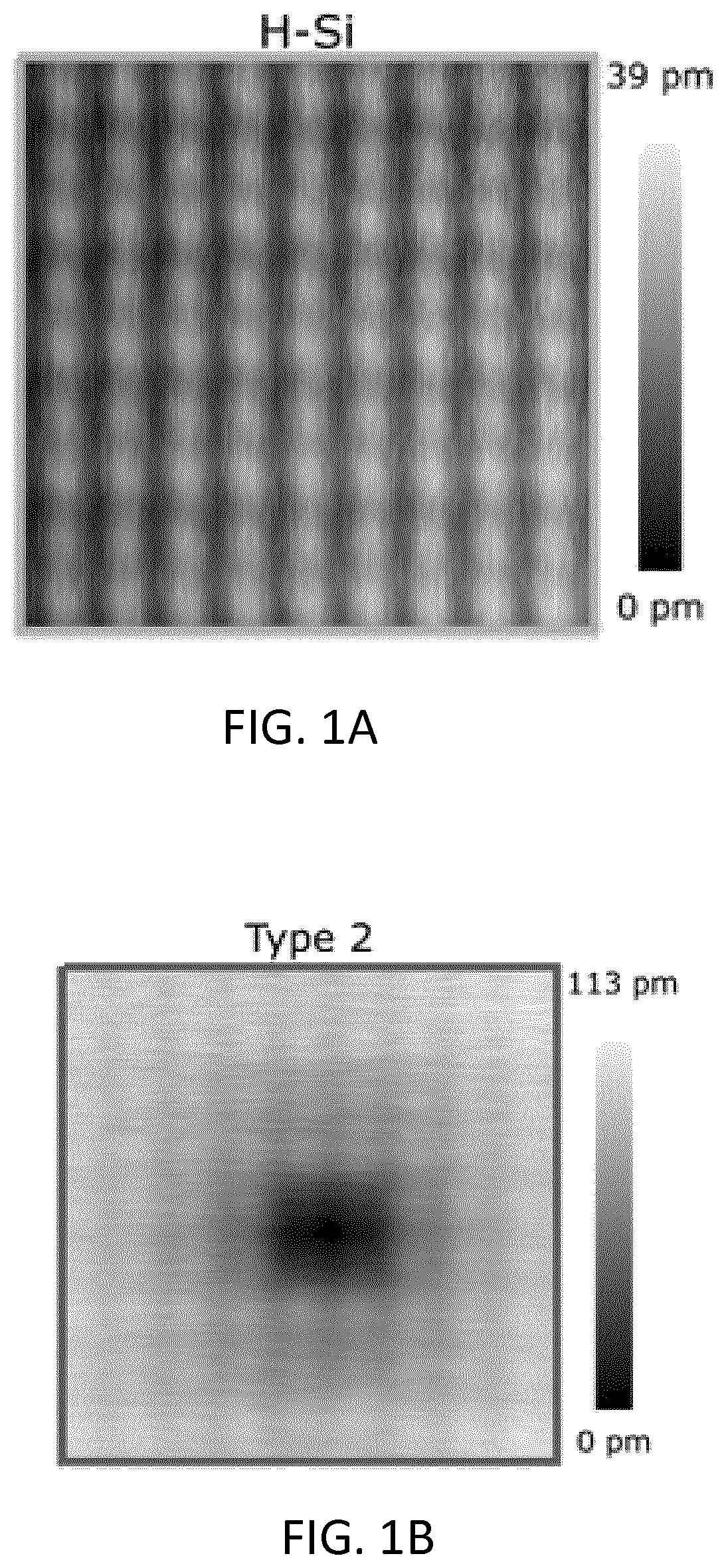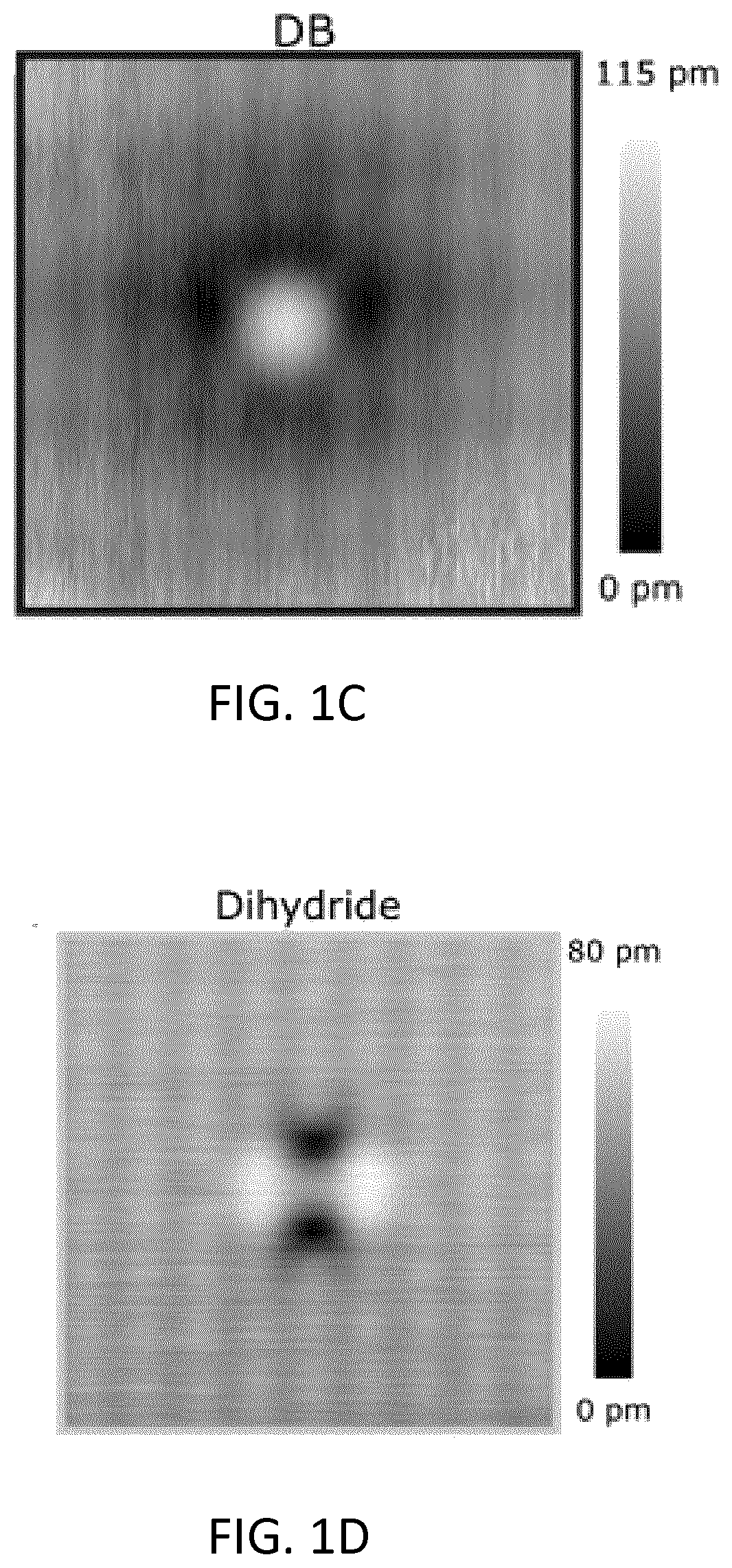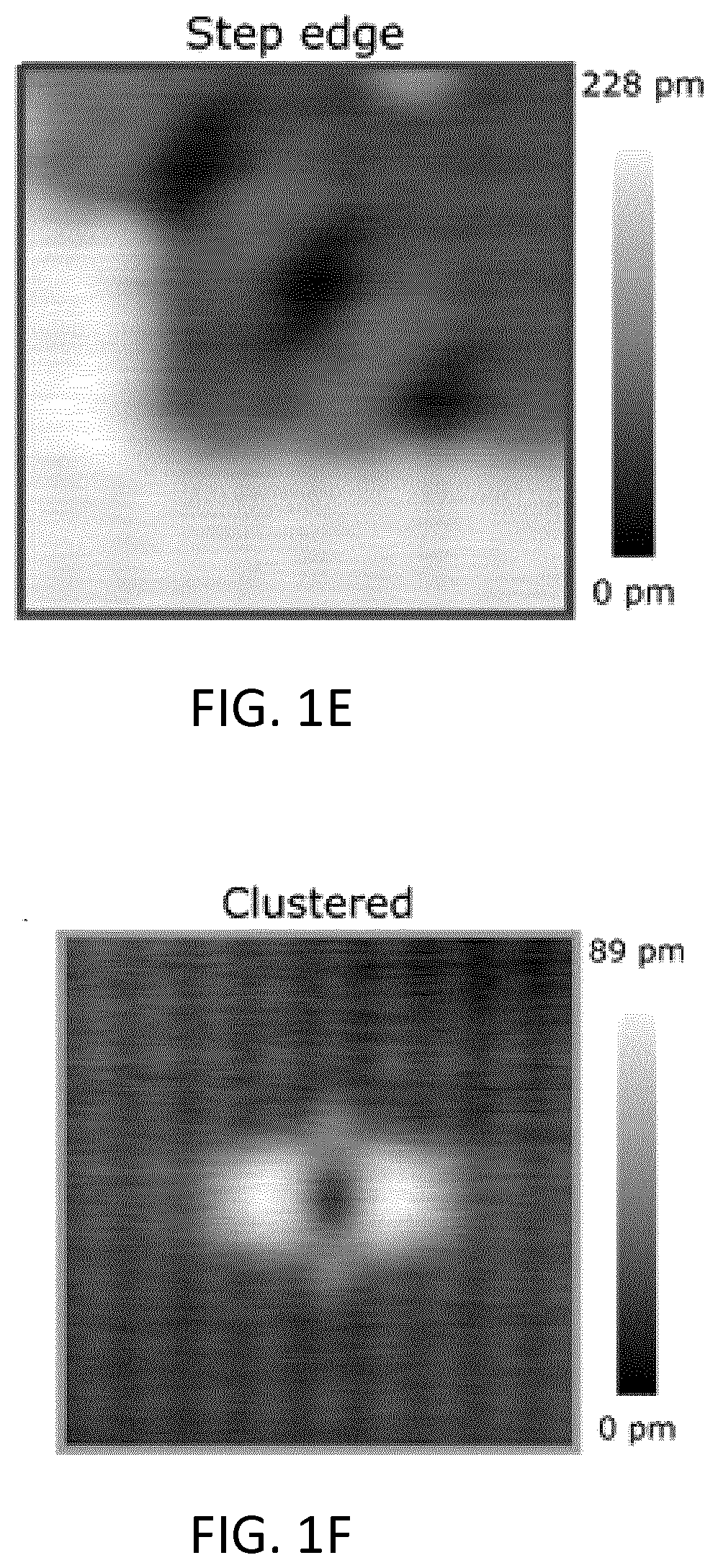Automated atomic scale fabrication
a technology of atomic scale and fabrication method, applied in the field ofatomic structures, can solve the problems of limited reliable device fabrication, limited space available, and limited complete automation of device fabrication
- Summary
- Abstract
- Description
- Claims
- Application Information
AI Technical Summary
Benefits of technology
Problems solved by technology
Method used
Image
Examples
examples
[0037]The following experiments are performed using an Omicron LT STM operating at 4.5 K and ultrahigh vacuum (4×10−11 Torr). Tips are electrochemically etched from polycrystalline tungsten wire and resistively heated in ultrahigh vacuum to remove surface adsorbates and oxide, and sharpened to a single atom tip using field ion microscopy46. In situ tip processing is performed by controlled tip contact with the surface6,47,48. Tip shaping parameters are the same as those detailed in incorporated Reference 29 below29.
[0038]Samples used are highly arsenic doped (1.5×10−19 atoms / cm3) Si(100). Samples are degassed at 600° C. overnight followed by flash annealing at 1250° C. The samples are then terminated with hydrogen by exposing them to atomic hydrogen gas at 330° C.
[0039]Image and data acquisition are done using a Nanonis SPM controller and software. All training data is acquired at an imaging bias of either 1.3 V or 1.4 V with a tunneling current of 50 μA. The patterning automation r...
PUM
 Login to View More
Login to View More Abstract
Description
Claims
Application Information
 Login to View More
Login to View More - R&D
- Intellectual Property
- Life Sciences
- Materials
- Tech Scout
- Unparalleled Data Quality
- Higher Quality Content
- 60% Fewer Hallucinations
Browse by: Latest US Patents, China's latest patents, Technical Efficacy Thesaurus, Application Domain, Technology Topic, Popular Technical Reports.
© 2025 PatSnap. All rights reserved.Legal|Privacy policy|Modern Slavery Act Transparency Statement|Sitemap|About US| Contact US: help@patsnap.com



